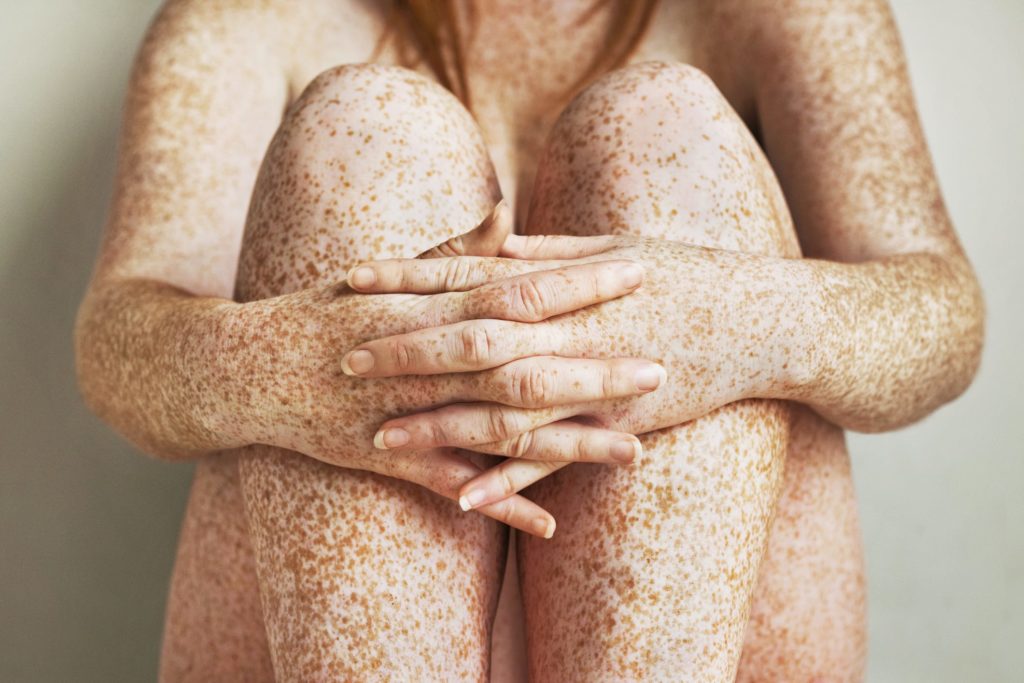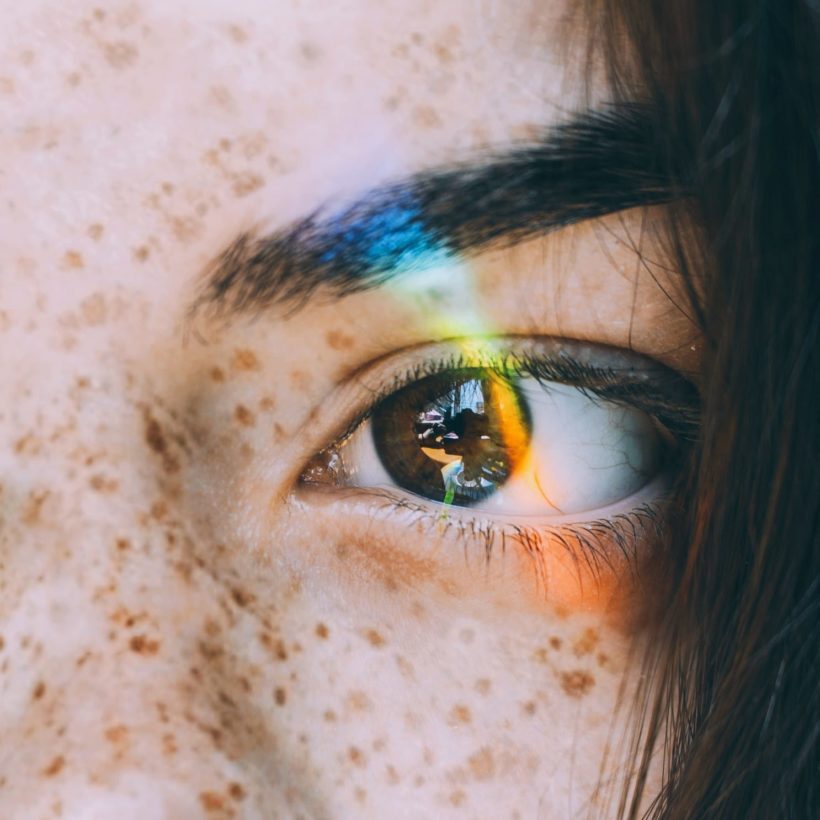While you probably glance at your reflection in a mirror several times a day, how often do you really, really look? And by look, we mean analyzing your moles, your skin discoloration, your freckles — all of it. Giving your entire body a thorough scan is called a skin check and can be practiced at home regularly. Though once a year, it’s still recommended to schedule an appointment with your dermatologist; having a pulse on changes in your skin’s texture and condition can alert you to any potentially problematic issues. Here, we spoke with professionals about the best practices for at-home skin checks:
What is a skin check?

Each year, the entirety of your skin should be assessed professionally or more often for higher-risk individuals. When you head into the office, you can expect a dermatologist to examine you from head to toe, including every nook and cranny and even areas where the sun never shines, such as between the toes, the genitals, palms and soles, says dermatologist Dr. Julie Karen, M.D. “Most dermatologists utilize a combination of visual inspection with the naked eye, and a hand help scope called a dermatoscope, which magnifies and illuminates to allow for closer inspection,” she explains. “The procedure is relatively quick and painless but can lead to the identification of cancerous lesions or their precursors, which may then be removed for biopsy.”
How often should you give yourself a skin check at home?
Dr. Karen says giving yourself a monthly self-examination at home is arguably just as vital as your annual visit to the derm. As she explains, regular skin checks will allow you to familiarize yourself with your existing lesions and thereby have a significant likelihood of identifying new, changing or otherwise concerning lesions.
“The vast majority of melanoma — about 80 percent — arise as a new spot, not within a previous mole. Therefore any lesions warrant close attention and should prompt medical attention if there is any concern,” she adds.
How to give yourself a skin check at home
Step 1: Gather what you need.
It seems obvious, but when looking at your skin, you need to, well, see it. That’s why Dr. Karen says a full-length mirror and a handheld mirror can be beneficial. You may also need a flashlight (like the one that’s built-in to your phone!), a magnifying glass if you want to go deep, and the assistance of a trusted partner, friend or family member. Since there are simply areas you can’t see yourself, asking a pal to look them over can be helpful. Dr. Karen also adds using a hairdryer and a partner to assist with inspection of the scalp.
Step 2: Follow the ABCDE evaluation.
When you’re giving your skin a close-up, what you’re really looking for is anything new, anything changing or anything strange, says Dr. Peterson Pierre, MD, a dermatologist and the founder of the Pierre Skin Care Institute. “The purpose is to uncover anything that may require medical attention,” he continues. “You should focus on your ABCDEs when doing a skin check:”
A is for asymmetry: Check if one half of the mole or growth looks like the other half.
B is for borders: Make sure the borders are even and regular.
C is for color: Look for any changes in color or if multiple colors are present.
D is for diameter: Look for any horizontal changes in size.
E is for elevation: Check for any vertical changes in size.
Step 3: Take pictures of worrisome spots.

If you’re going through the ABCDE check and find a spot that causes you to pause and worry, snap a photo. If you feel uneasy, go ahead and book an appointment with your dermatologist and show them the image. However, if you feel like something may have changed, but you’re not sure, wait a month, and then take another picture so you can compare. “This is particularly useful for individuals with numerous moles. Refer to those photos when performing your monthly examination,” she adds.
Step 4: Don’t hesitate.
Even if you cannot physically go in for an appointment, Dr. Karen says there is now a convenient, non-invasive and effective way to assess the risk of an individual lesion and determine whether an actual biopsy is essential. “Through telemedicine, your doctor can determine if the lesion requires testing,” she continues. If yes, they can send you an at-home sticker, which can be topically applied and then sent for analysis to determine the mole’s risk genomically. Or, they can advise you to come in for a thorough examination. Whatever the case, you should never wait since early detection is everything with skin cancer prevention.







